Weaving


Weaving



Materials Needed:
Any sturdy kind of Paper (construction, poster board, etc.)
Pencil
Ruler


Ways of Weaving
Plain Weave
Pattern:
First Row: Over 1, Under 1
Second Row: Under 1, Over 1
Repeat Pattern
The plain weave pattern is used in percale, muslin, and taffeta fabrics.
In the beginning, the teacher prepares the mat. Fold a rectangle of firm paper in half. Draw a light pencil line across the end opposite the fold, about 1" from the edge. Make a series of cuts one inch apart from the folded edge to this line.
Cut 1" strips of paper the correct length for weaving across the mat. Show the child to weave the first strips over 1 and under 1, continuing to the opposite side of the mat. The next strip is woven first under 1 and then over 1, continuing as before. Continue to weave until no more strips will fit in.
Note: For very young children, one end of the mat may be left open. Use fewer strips and a smaller mat.

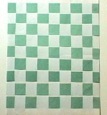
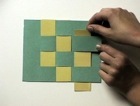
Variations
Strips of different widths can be used, perhaps alternating thick and thin.
Mats or weaving strips can be made from glossy magazine pictures.
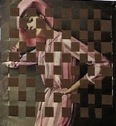
Vary the weaving materials as suggested above.
Once the children are able to weave you can show them striped or checked material and they can weave a pattern of stripes or checks.

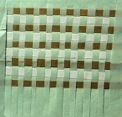
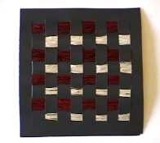

Traditional Weaving Patterns
As children develop more skill, they can weave the traditional weaving patterns. Bring in samples of woven fabric and baskets that illustrate these patterns.

